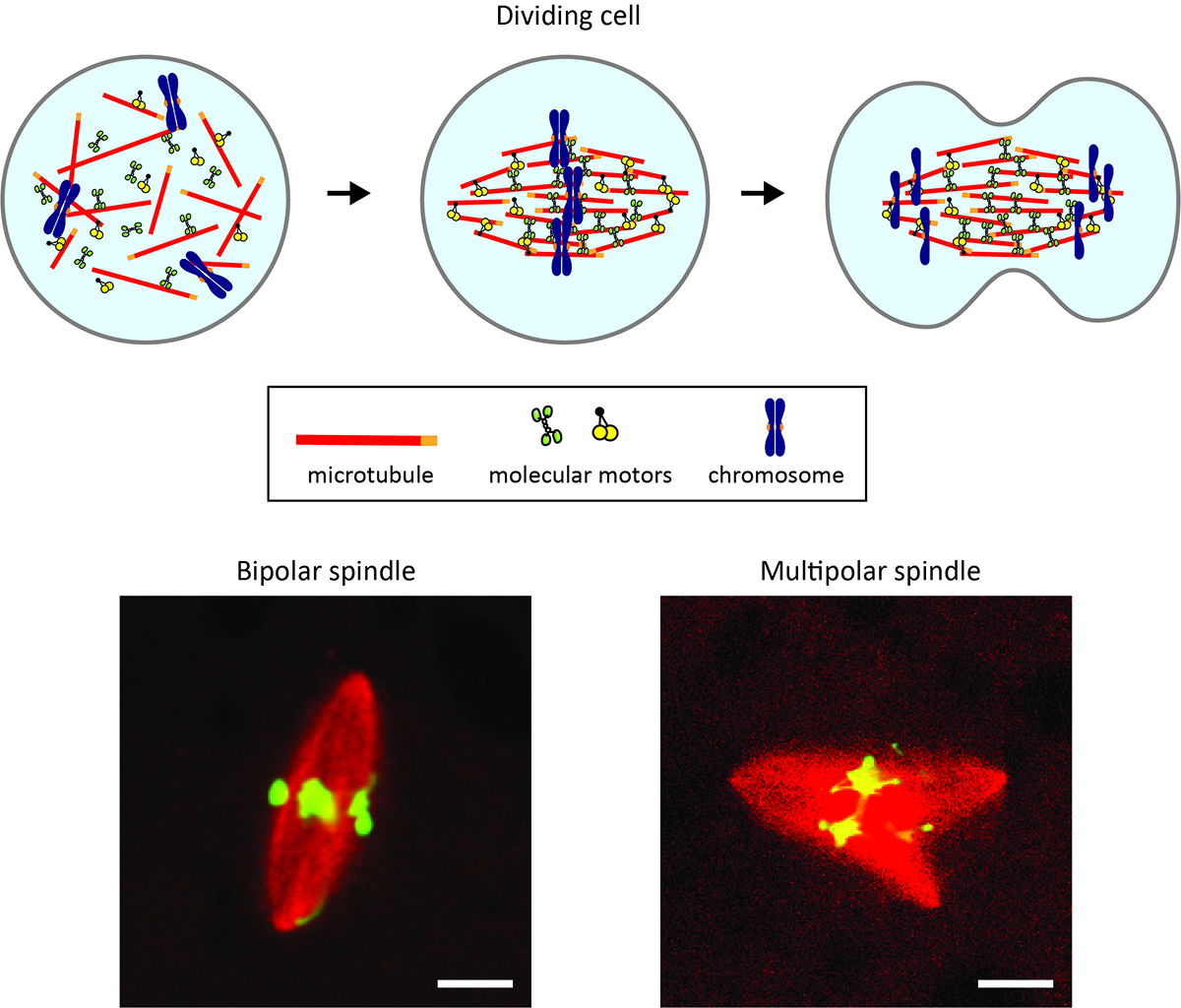How to build the cellular machine for error-free chromosome segregation
Press release
Morphological growth dynamics, mechanical stability, and active microtubule mechanics underlying spindle self-organization
T. Fukuyama, L. Yan, M. Tanaka, M. Yamaoka, K. Saito, SC. Ti, CC. Liao, KC. Hsia, YT. Maeda, Y. Shimamoto
PNAS (2022) 119, e2209053119 DOI:10.1073/pnas.2209053119
![]() Press release (In Japanese only)
Press release (In Japanese only)
Each time a cell divides in our body, it builds a tiny micron-sized machine called the spindle. The spindle passes the copied DNA from a parental cell to the newly-created two daughter cells and should have a bipolar, football-like shape for evenly splitting the chromosomes that carry the DNA. Disrupted spindle shapes can cause errors in chromosome splitting and malfunctions in the cell offspring.
Now, a new study reveals how the shaping of this tiny segregation machine succeeds and when it ends up with failure. A team of biophysics groups in Japan (Yuta Shimamoto’s lab at the National Institute of Genetics and Yusuke Maeda’s lab at Kyushu University) and biochemistry groups abroad (Kuo-Chiang Hsia’s group at Academia Sinica and Jeff Ti’s group at the University of Hong Kong) develop a computer-based algorithm and fluorescence microscopy to track at an unprecedented resolution the way in which the machine is built from scratch. They find the unique “assembly instruction” for making the spindle with the correct shape and one for making the spindle with unfavored shapes. The team also uncovers a memory form-like material property of the spindle, which appears to be a key that separates success from failure in assembling the machine.
Abnormally shaped spindles are linked to conditions that impact human life, such as cancer and infertility. The findings of this study should be an important step toward understanding the relevant mechanisms.
















